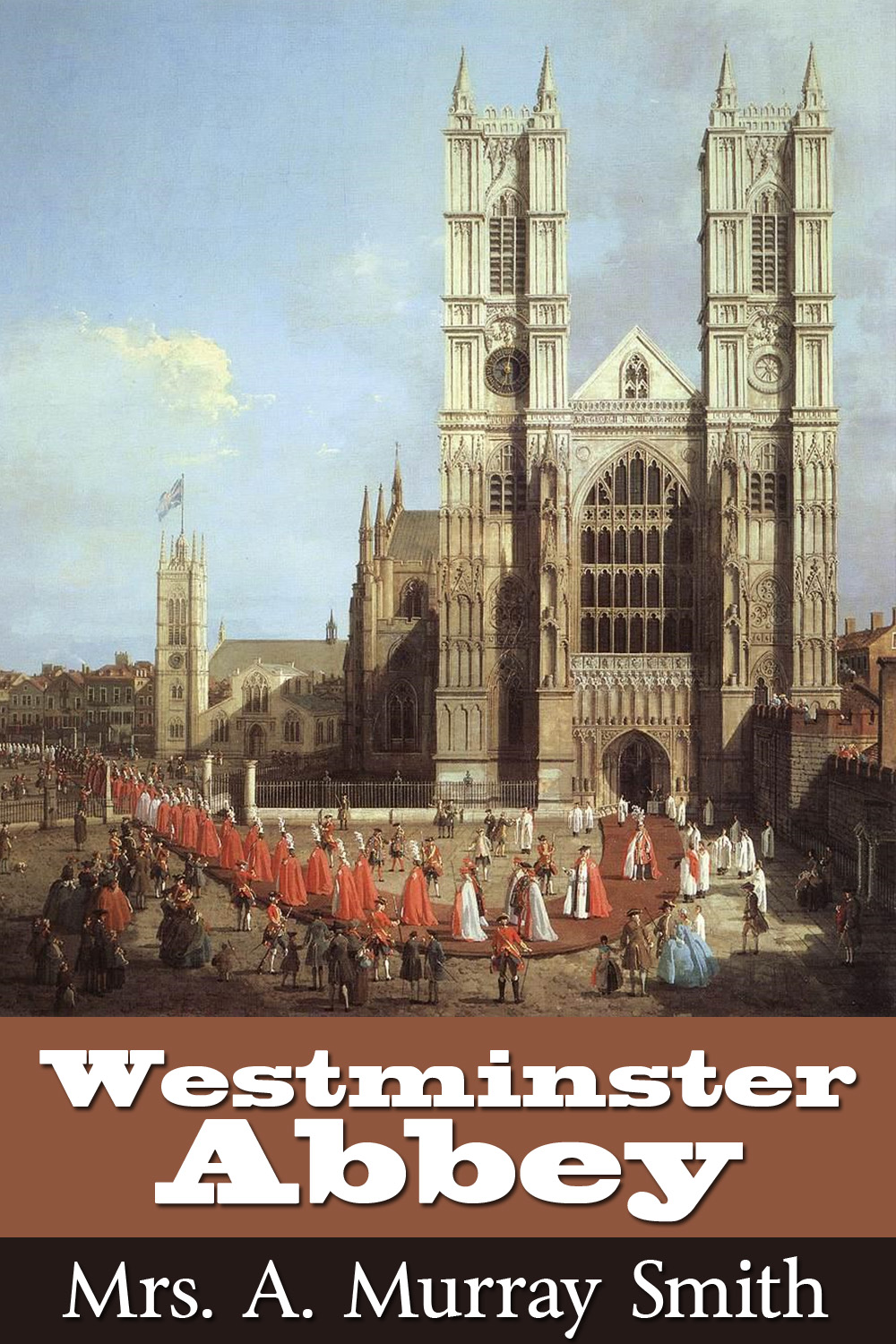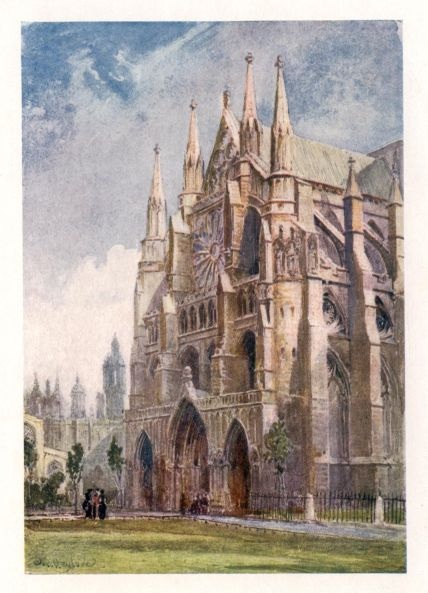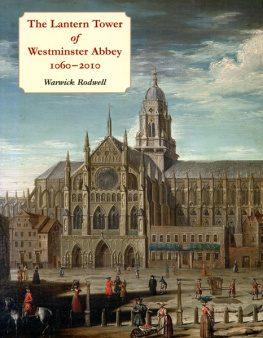Alexander Murray Smith - Westminster Abbey
Here you can read online Alexander Murray Smith - Westminster Abbey full text of the book (entire story) in english for free. Download pdf and epub, get meaning, cover and reviews about this ebook. year: 2011, publisher: Andrews UK, genre: Art / Science. Description of the work, (preface) as well as reviews are available. Best literature library LitArk.com created for fans of good reading and offers a wide selection of genres:
Romance novel
Science fiction
Adventure
Detective
Science
History
Home and family
Prose
Art
Politics
Computer
Non-fiction
Religion
Business
Children
Humor
Choose a favorite category and find really read worthwhile books. Enjoy immersion in the world of imagination, feel the emotions of the characters or learn something new for yourself, make an fascinating discovery.

- Book:Westminster Abbey
- Author:
- Publisher:Andrews UK
- Genre:
- Year:2011
- Rating:4 / 5
- Favourites:Add to favourites
- Your mark:
- 80
- 1
- 2
- 3
- 4
- 5
Westminster Abbey: summary, description and annotation
We offer to read an annotation, description, summary or preface (depends on what the author of the book "Westminster Abbey" wrote himself). If you haven't found the necessary information about the book — write in the comments, we will try to find it.
Westminster Abbey — read online for free the complete book (whole text) full work
Below is the text of the book, divided by pages. System saving the place of the last page read, allows you to conveniently read the book "Westminster Abbey" online for free, without having to search again every time where you left off. Put a bookmark, and you can go to the page where you finished reading at any time.
Font size:
Interval:
Bookmark:

WESTMINSTER ABBEY
by
A Murray Smith
This electronic version published in 2011 by
Andrews UK Limited
www.andrewsuk.com
This edited version, including layout, typography, additions to text, cover artwork and other unique factors is copyright Andrews UK 2010. No part of this digital publication may be reproduced, stored in a retrieval system or transmitted in any form or by any means electronic, mechanical, photocopying, recording or otherwise without written permission of the copyright owner.

The North Transept
Here is represented the north front as it appeared before the last restoration, i.e. we see the handiwork of the eighteenth century and the faade as remodelled under the superintendence of Sir Christopher Wren.
Kings are thy nursing fathers and their queens thy nursing mothers. From the reign of Edward the Confessor, the last sovereign of the royal Saxon race, till the death of Elizabeth, the last Tudor queen, these words of the old Hebrew prophet were literally applicable to the great West Minster. When Edward knelt within the Benedictine chapel on Thorneye, which had so miraculously withstood the ravages of the Danes, and vowed to dedicate a new church on the same spot to the glory of God and in the name of St. Peter, even his prophetic soul cannot have foretold the high destiny of his beloved foundation. As the building slowly grew during the last years of his reign, he conceived the idea of its use as a sepulchre for himself and his successors. In his visions he may even have foreseen the coronations of the English sovereigns within its walls, his own canonisation, and the long connection between the throne and the monastery. All that the words above imply would have appealed to the pious founder, but what of his feelings could he have looked on through the centuries? He would have seen much to vex, yet we venture to think he would have found consolation, even in these latter days when the monks are no longer here and the Roman Church has ceased to be the Church of his country. Three hundred years after Edwards death came the destruction of his church in the name of piety, but for this there was ample compensation in the beautiful and stately buildings which were raised upon the ruins of the old, and in the devotion to the first founders memory shown by Henry III. and his descendants. During the ages of faith, when the Pope held sway over England, king after king gave liberally to the fabric, while their queens may also be counted amongst the benefactors to the West Minster. St. Peter, the patron saint to whom the church was dedicated, was practically lost sight of in the halo which surrounded the memory of the Saxon king, and it was to the English royal saint rather than to the Hebrew apostle that the Abbey owed its peculiar sanctity. From the first it was a royal foundation, a building consecrated to the memory of a king, yet none of these considerations were weighed in the balance when the West Minster shared in the general downfall of the English monasteries. The sovereign himself laid violent hands upon the treasures presented by his pious forefathers in honour of St. Edward, and the saints body must surely have turned in its coffin when, to save it from indignity, the monks were obliged to lift it from the feretory and hide it beneath the ground. The shrine which had been the pride of each king since the days of Henry III., and honoured no less by the first Tudor sovereign, was stripped of its glories: the shining golden top, which used to be seen from end to end of the church, was melted down; the jewels, which had been offered by royal worshipper and humble pilgrim alike, even the precious images of sainted king and saintly evangelist, were ruthlessly transferred to the palace treasury. None of these survive to-day, but the mosaic pillars and the basement were concealed by the brethren before they fled from the monastery, and the lower part of the shrine was reconstructed by the daughter of the sovereign to whom the devastation was due; to her also we owe the wooden top, which replaced the glorious golden feretory. The monastic community, who were restored to their home by the same Queen, the bloody Mary of Protestant history, survived a few years longer into the days of Elizabeth, and the former intimate connection between the Crown and the convent, severed with the final dismissal of the Abbot and monks, found a pale reflection in the friendship which Elizabeth always showed to the Dean of her new foundation. But the Maiden Queen was in very deed the last royal person to whom Westminster Abbey owed substantial benefits. She refounded the collegiate church, which finally took the place of the monastery, and established Westminster School; before her reign the only boys taught within the precincts were the few scholars collected in the cloisters by the monks. She is, in fact, the foundress of St. Peters College, which thus owes its status as a royal foundation to Queen Elizabeth.
Very rarely, however, in modern days has the church or the college been honoured with a visit from the reigning sovereign in propri person . At great functions, such as public funerals, the heir-apparent is occasionally present, but the Crown is usually represented by a Court official, and the Deans stall, which is only vacated for the reigning king or queen, has been occupied on very rare occasions in the last hundred years. The Latin play acted by the Westminster scholars every winter term, was formerly a gala occasion on which royalty used often to be present, but the old custom was gradually dropped. In the year 1903, for the first time within the memory of this generation, a royal person, H.R.H. the Duchess of Argyll, was present at the performance.
With the last of the Tudors there is no doubt that the strong and living bond between the palace and the Abbey was slackened, although it has never been altogether snapped, nor will it be as long as the coronation of our sovereigns continues to take place in Westminster Abbey. Then and then only does the king resume all his ancient rights, the collegiate body is practically deposed, and people realise that their national church is really a royal peculiar. For while the kings came less and less to St. Edwards shrine, their subjects in ever-increasing numbers, like the pilgrims in olden times, were and are drawn hither as by a magnet, till Westminster has become the sanctuary of a nation, and is no longer the sepulchre of the seed royal. A plain English squire, one of that happy breed of men to whom his native land - this little world, this precious stone set in a silver sea - was dearer than the blood of kings, was destined to inaugurate a new epoch in the annals of the Abbey. To this man, Oliver Cromwell, it is that we owe the first conception of this church as a fitting burial-place for our national worthies. From the State obsequies of Admiral Blake, which were held here by Cromwells command, has germinated the seed which has borne fruit in the public funerals and in the monuments, ordered and paid for by Parliament, of statesmen, soldiers and sailors. The nineteenth century has closed, and there is little space available in the Abbey for the worthies of the twentieth, but the national feeling still turns instinctively to Westminster on the death of a great man. For a long time past memorial services have been substituted for the grave or cenotaph, so lavishly granted to practically the first comer only a hundred years ago. Yet although the material fabric of this ancient foundation can no longer receive her sons within her bosom, her spirit is perhaps more alive than it has ever been since her altars were demolished and the images of her saints torn from their high places. No longer do the smoke of innumerable candles and the fumes of incense blacken and obscure her arches, but the spiritual breath of supplication and of thanksgiving still as of yore ascends to heaven from this ancient church, consecrated by the prayers of so many past generations. The old order has changed, and a Protestant form of worship has long taken the place of the florid mass; what further changes the future has in store no man can prophesy. But at present churchmen of all shades of religious feeling may worship in this church with no extreme ritual to disturb their minds, and at the same time with none of that irreverent and jarring carelessness in the ordering of the services which vexed the souls of many in the days long ago, before any of the present generation were born. On one festival in the year, the Translation of St. Edward the Confessor, the 13th of October, Roman Catholics return in ever-increasing numbers to the West Minster, which was once their own, and pilgrims may be seen kneeling round the shrine, offering their devotions to the saint. On this historic day the Abbey clergy, mindful also of the founders memory, keep his feast at their own service in the choir, by a sermon preached in his honour, Protestants and Catholics thus uniting in a common homage to the memory of the sainted English king.
Font size:
Interval:
Bookmark:
Similar books «Westminster Abbey»
Look at similar books to Westminster Abbey. We have selected literature similar in name and meaning in the hope of providing readers with more options to find new, interesting, not yet read works.
Discussion, reviews of the book Westminster Abbey and just readers' own opinions. Leave your comments, write what you think about the work, its meaning or the main characters. Specify what exactly you liked and what you didn't like, and why you think so.





